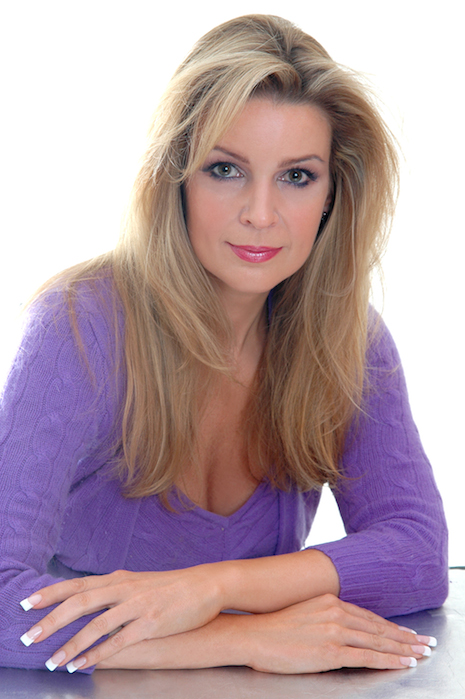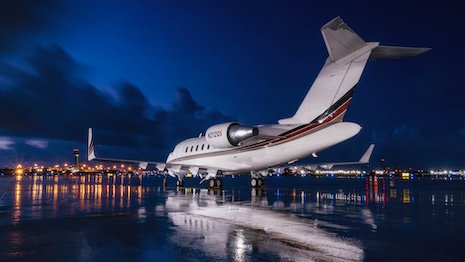By Lorre White
When I say elite end, I mean the high-price-point items that have an exclusive ultra-high-net-worth (UHNW) clientele. That is a group with a minimum of $30 million liquid assets up to a $1 billion.
The luxury sector is rebounding quickly. The elite end of the luxury market is just “en fuego,” Spanish for “on fire.”
Sharing is scaring
The high-price-point luxuries that have exclusive UHNW customers rebounded faster than low-price-point luxuries that rely on the middle classes for 80 percent of their sales.
Pre- and post-COVID-19 purchasing habits, especially among the UHNW millennials, have radically changed.
Boomers and Gen X UHNW always liked to own their own yachts, private jets and secondary homes – third, fourth and fifth, too, outright. They understood the necessity to control their vertical.
The millennials came along and it was all about sharing. Who needs to take care of the maintenance on these large crafts/homes? It is easier to share, or charter, and environmentally more friendly, which we are so concerned about.
Well, that has all changed. After one pandemic, ownership is skyrocketing.
Private jets, yachts, multiple secondary homes: being the sole owner is chic again.
New equipment, then used, then sharing is for the next tear down.
Fractional ownership is for those who cannot afford to own fully. Under fractional is charter/rental.
Those UHNWI who were into not owning when the pandemic hit found themselves stranded. Homes that they usually rented – the owners took off the market for personal use.
All the charter yachts were being used by the owner or fully booked. They could not get private flights when wanted. These 1 percenters were out of luck and having to deal with the inconveniences like they were middle class.
Indeed, this created a profound shift in the way this bracket behaved and they are taking back their power – ownership, or at least as close to that as the different wealth tiers can afford to get.
Matter of fact
Wealth among the UHNW grew during the pandemic. It is usual – actually common – that in financial dips, those with access to capital can buy up assets and businesses at bargains and then wait for economic recovery.
The UHNW are also much more diversely invested in geographically, financial instruments, and industries of businesses. For this group, it is more of a paper loss until things readjust.
The key findings of “The World Ultra Wealth Report for the first half of 2021” claims that the global UHNW population grew 1.7 percent in 2020 to 295,450 individuals.
The combined net worth for this population increased by 2 percent to $35.5 trillion.
For a second consecutive year, the best-performing regions were North America and Asia.
United States, China, Japan and Germany, in that order, are the top 4, with the United States being over three times larger than the second-largest, China.
The top 10 countries are home to three-quarters of the global UHNW population.
Up, up and away
Private jet sales are up in both the new and used categories. Charters are up, not just a little, but by a lot.
A shortage of newer-model business jets is driving up prices of second-hand aircraft, as new buyers enter the market.
Pre-owned business jet shortage drives sellers to push up demand for new jets from plane makers. The price gap between old and new narrows.
Private jet membership company Wheels Up reported a 68 percent jump in first-quarter revenue, and active members grew 56 percent from a year ago.
Pre-owned and business-jet shortage lifts private plane sales. A shortage of newer-model business jets is driving up prices of second-hand aircraft, a trend that is expected to deliver a windfall for luxury plane manufacturers as new affluent buyers enter the market.
In this sellers’ market, the buying rush toward private transport is so hot that some buyers are grabbing up second-hand planes before fully inspecting the product.
Interest increases from first-time buyers, as well as corporate customers increasing their fleets.
Flight demand exceeds NetJets’ all-time highs. The move impacts renewals and new customers for jet cards, leases and fractional ownership shares.
As unprecedented demand within the private travel industry continues, NetJets, the worldwide largest in private aviation, announced July 7 that it will be placing all new requests for its light cabin aircraft – the Citation XLS and Phenom 300 – on a waiting list effective immediately, even renewals.
According to Barrons', private aviation compared to commercial flights has almost 700-fewer touch points, including contacts with the crew in the cabin and airport facilities.
Since COVID-19, wealthy travelers are going private. Some wealthy travelers previously avoided private jets due to concerns such as “flight shaming” over environmental concerns, because corporate planes burn more fuel per passenger than commercial. The environment takes a backseat when your family’s health is in jeopardy.
 Lorre White
Lorre White
Come sail away
The yacht and superyacht brokerage market has not only recovered from the impact of the COVID-19 pandemic – it is, in fact, doing better than before the pandemic and the market looks set to continue to outperform.
The used yacht market is doing particularly well, as buyers look for yachts that they can take out to sea as soon as possible.
Buyers formerly interested in five-year-old boats will now buy a 10-year-old.
Those who have yachts do not seem to want to sell at the usual pace, so the market is tightening due to a lack of inventory.
Within the first half of 2020, 414 superyachts were sold – that is more than the entire 2019.
New-builds are on pace to deliver 494 new superyachts this year, up from 341 in 2020. The used yacht market cleared away inventory with boats that had been on the market for 2 years clearing out in a month.
Being out on the yacht allows for mobility and activity while still being COVID-19 safe. Owners only have to interact with their crew and could require a two-week quarantine for their personal crews.
As you move down the scale to fractional and then charter, with each step comes more contact and touch points with a crew that had just been out to sea with another group, but far less than being at a hotel.
Home away from home
Demand for second homes is skyrocketing in the United States. Buyers clamoring for space outside cities and expanding their searches beyond the traditional borders of areas such as the Hamptons, Miami and Aspen.
Ever since the coronavirus first arrived on U.S. shores, the priority among high-end homeowners has been clear: to get out of cities and to stay out.
Second-home markets have seen record-breaking seasons for both sales and rentals, and the heightened demand seems to be more than a blip as inventory tightens and even properties that had previously spent years languishing are going into contract.
Homes that once were less desirable because of too much property to maintain are in great demand as the uber-rich want to distance themselves from their neighbors.
Secondary markets with acreage take center stage to traditional hot spots. The distance from town centers is a feature, no longer a hindrance.
The UHNW want acres where they can build a basketball court, tennis court, yoga studio and movie theater, creating their own mini-resort compound.
Some owners are even looking to create housing for butlers, chefs, nannies, tutors, property managers and other staff to maintain a quality of life while reducing the exposure risk.
Small towns such as the Hamptons swell to five times their size for three months a year. When COVID-19 hit, all those New Yorkers with summer homes moved out permanently to ride out the pandemic.
The single HENRYs – High Earners Not Rich Yet – House-shares do not exist this year because homeowners have opted to just keep their homes for themselves or rent to smaller numbers because there have been strict regulations on rentals that are not for single families. This has a domino effect on how people spend their money.
The local public school system is overflowing in what was once the off-season. Grocery merchants have a higher demand all year round.
Not going away
Will this radical purchasing behavior shift among the UHNW be maintained or is it temporary? Nothing is permanent and things always move, but priorities have changed since pre-COVID days.
No one thought in this day and age that developed countries would just close down. That people would be forced into quarantine in their homes, that dead bodies would be stacked in the streets and sick turned away from hospitals at overflow capacity, or that business would shut down and accelerated online growth at warp speed.
Clients who insisted on physically seeing high price-point products before purchasing are now doing it off the Web.
Competition for scarce products such as jets, yachts and exceptional homes are causing multi-million-dollar sales sight unseen.
The pendulum has swung to the other side. Will it have a correction?
I think to some minimal extent it will.
Millennials and Gen Zers now bear the scar that COVID has left on the collective psyche and the fear of what could be ahead. They have experienced not being in control and they do not like it.
As of July 1, only 47 percent of Americans have been fully vaccinated with both shots and the numbers getting vaccinated have plateaued.
What about new variants, or new completely unrelated viruses? Herd immunity is reached somewhere between 70 percent to 85 percent.
I do not see things going back to pre-COVID, especially among the super-rich who do not have to take the risk.
The lower and middle classes do not have that option. They will be the test cases that the rich watch to see what will happen from behind their hedgerows.
Millennials have learned the importance of controlling their personal verticals. They want to ensure their freedoms that ownership brings.
STRONG MOVEMENT IN the elite end – high price point – of the luxury sector is a good sign as this group usually leads the economy.
Growth has been so ramped and so different than in the pre-COVID high-end market that the few elite luxury advisors who specialize in this sector are in hot demand to help guide these luxury companies.
The luxury sector has always been active users of specialists, advisors and consultants to help direct the brands.
There are two divisions within luxury: the aspirational and the UHNW.
The fashion, cosmetics, skincare, spas, perfumes, handbags, accessories and other affordable price point items depend on the middle classes for 80 percent of its sales.
The superyacht and private jet companies have exclusive UHNW customers.
A $900 pair of Chanel sunglasses and a $200 million megayacht both need luxury marketing, but they have different strategies and very different customers.
Breaking into the high price-point end of the luxury sectors is, of course, harder and more expensive to do.
The UHNW are more economically insolated, and much harder to reach. It takes a very specialized marketing approach that is almost the antithesis of mass marketing.
Lorre White is founder president/CEO of White Light Consulting, a luxury marketing consultancy focused on the ultra-high-net-worth market. Reach her at lorre@whitelightconsulting.net.
{"ct":"vLDgg\/AGZdWGz9oLVg5jg61BmSBfh2as\/lzPQ3gdih6O7vk\/E4Qo2cEQCR8695qQ4IRWdawW1yuL8d8dh6k9Y57Px71E\/tuBv6StO3IQwz95VO3DfpHsmaJivberdBMZOgNNYGwBrOOb\/cmLHUTPT+ieDjBMFzZK8gxkcS8Hr7yCDHCU846TgTVHSa5V8bbAUf0tAlqYh2qJZBdIfgENgsHM5uw5TwffcFhMYUK3SDr0rVH3IlrepilbQepoYKbwnit5BV04z5BUe\/\/tIxsdjvI4wG8vJfVhvY\/+Tc9zhauawzyFtP2SY+Pty5dH+aqPUUto+UmdZbJv1bnIXoYbrEAs8IhcpvCRF8TpOPIW23RH8EesskrdKBOzRdm6liksry5npU3m7+1tsJrhekG+lLH+H7zMIlrWPGekgnxI+NEwHKd2lYhypajbbXI9I5xOM4icgD5qbEZXzI+9or2uKi\/02fALVvVGm1S6fuof7G9JYHuiWYTx+QHQYF3wsya1Dt8lprVrUeZalmMtgshKCfVZlOkFB5Id5YIzMeEeNWAryS22RdzJ\/2OwVMn4i3dfYCiVJL0Q8UNPGwB3MKHjfeQ58XJOe9AgjJMybL1yBrEXrPauWhZQAlYSirwpsDGVqqcHPKrFEN09p+AYG5ItlnGQHnCnrcnemrlT2gs8DF+MI8DXYM8Y1TcITSsGKT2B0P4jZXwzJask5Wchw93iNEWTJq\/TN6uNJFwMcOHecuDdjGwBJ5NfatzXVWDBo7fk5fmdVpmxEIjoV+y7O\/yQheXphHKJU\/k6puawMmYtXQURD4xIDVyI7wKxv2Ub0x+j5E06\/aY4MXWwOu29oxfeUYzVbrt\/upUWbOxdRTGaOUNtuOBdS0YlG\/QrCL8\/HL5MWH1Qvmdqh\/GwxRfL6cPsP1i4e2\/Ft2C5d93ulzdoFFU3elGyvZcbqyV9mtayyi9FslJXzNcPJT2YZtmmkEIW5oKo0i1wza7L9emX33zqfvyBsablaeEN0X3Ws\/u2Z6VdX5c1\/15vE4oktVKbgx6csKua2UrBrNuq16z2XKO0sdyLCKP+\/EaUlVK\/58RBX17dazXsjqV8La6sRDaDy8rhV8EiMUNz7GV4g4DdPCip3fJ8L6WH7fcluEAk9trjoH8i2ohPd\/rXvjKWHcZWsgOTlskONzErwUDX0tk6kd9FYIh8yopY6yZWVdjS1GCiN9M2LRTNE9eMTb\/UAE9PWBOzQLT5FVX7rWU0QD7WtJdnHlJeNJ2KNJ7\/leQ4ygknvjrKGInN8LoX+QjAEpmRrr8j2Rol\/nfDT5xsKGlWHWqHjV9t9uZd\/\/S4x3rwKJixWmXPJl4fhj7rR+G157d7VeM4fbElNocWqPKpK6VikwpqNc\/va9gz8pN4PIInZWZB9bWi5VyTTzhUzy9Z7lV7EaeU3u7icVVIHgSeACNvuUnIoH3Em1+veEhmVVIY2YNxbJfr65ZKXWd63qTeGEaTy1vVgbZ+tu0wyvSRvLM3b0jzlSco8ajOIqr9joXv24xJsWTZkUTELHpa2G1EB8xHR0wA5VTuZFY2\/9WjxfyrhceBWyAOYFzgspy\/IzHHV7STSq9aTKbltD94N+qSHscyS2XR3+tOVVCVhMHOScZS9S12Ua32Ht9zG1AqUzXPB+lTe6oeS1quh+dgCQSrEckhnmQQtKqQTG0BDiswLGwPPoJgBjLQEoVxP17yqJf0kxgrLYZSGrIo8OhToM0sn6baIDqKN9RGahUuC2fwgrJjd0cs6fhI0jwmdKMdLwAGdJ7Zn8YCpwDP\/q+nc4328FIMTePPD2B65p7jpY5jrU1Dm4HQAUds5vzg2eW2k\/t6j89cxJeuLlUJYWVWHz\/t3S9KvJEbdY9V15xFt5\/iR3zlFZ3hFyCpyBzpqP36pd+5I+TpakcF12XmuaZyVLk0vzlOF1rSKe+a8JN0\/w5aaqVON6U4x1IDL+KUVCvcywQS5ncfjFJv2ycQ525QHtNP37FfP1eX5fjWk20\/duijOrtFVJkz5xIXCPyp5JnE0eL8PLkpCsCLXOaQ0NEvH6nEp48LwPaYmXgeGQQY9vyzYzpvni\/GkGVZzrONMWHFFc4tsV9yZX9EB5v9XCQLI0btuyqcv3djuRSSkI5McBCs2lMIDm+JOlQDIpLdmNcEJxP9HGWuskxN95Cdipu2nZRUHl0GwIv1DQ+wodouuTlUDJAG8b05BoaiAWRTOyDEEKXTTY\/7VlkZTtpfFtCBTZMPcwxUDRYd56xZITQDmMoIxkBbl0k8t8pN2L8e5OpDullnK9lzQObRpUWTagc0y39UFj6HZ5l0\/obzOFCYDHK6AmJfPq7z5ePRdkse\/4eZkl7UspFObdU+Q0VTpeUDsnu7F6O+KavJBhP2DHWth8NBt2H9BC1opm6nAQ6Aatd8o\/wkloMrIIOm0yA+4VMxc2KA1kGT7rtGMXAS9pFSv2ekvdQXd98YzHj80HXV+Lm7P5\/cOjbP2KGNeTUjRCwMjwdV4PcqjZNwaA6JfUaFLVdTnZTEABlitbIavQcFozXdXOsc3O\/aN95CTKlh0TIo\/pFBTtCOfqHQBR0zuWBEBvdfv5Af69KZvImvLqM1kDC9WGFoToNZWu46PbJshoqwE\/mgMQViD3hXP4tRP1C7mHIAQadmyBIjWG6iDJSWKQt5xyPK5bPJkI6BG2\/OPafzlUf74f0zZfkjJT0t14jK4IWiQMKkrer81lFe12RAZZQMwZX5Eb7N6bh54\/bJEcluNIK+K3tmHjRU\/apR+FrIotTRBfr1RHnfbSD\/\/QYIbjaU0ZQ6p5ay4t07jFxiu+rHrAr2553lQUnDcWpWqH\/PgY666ay27LukPZ1sILXvsze0kp5ZK1f44PT0k6BN6QgNtgyhEFYKgNgba+1Ez9KMdvkoXLRvmJxtx1zHuoFATcXE3V6sGqjOpiJe70Q4PbbLw0AJweLik4xbLwEXVBvMasYnCmlqQkx7KFAWKeAeYZZ71fQay3aV5vUNVw34wsWEBCGOGZNnfayA1St\/YJu2H4yQSnTOQwKqwXD7Wcseo0lY+gTkw25TyV9HPdqkNMeIHQd3MKelWsaClEuY9o7Q4HBKcY5mCNCZPW+lzA0V6NAZzXH3cKBO2FS3gpA4Rjy7hBAqaP6cCehhMjhYIRm\/RBWeTqEUe9IJIDwZZ2Pa4ntECPTZvFj5uYMwO7ziKbtaELmCe+VFSOnxdnzDMesmT+QBfGD67RH6s1bTmNHJ+ml7vsPj2Etvo9IBve6eT9de7N\/spYZfjA59Oe8TjNrolGUUaJS+nCsOdZGuJctnkBRrQr7n5paO1Snv\/vPV7JrZypHijTxRSMxC8yJvuYe+DaQPlLTHdQFR4jNZ+pM2gUo3W5k3\/roQOXEhygGLJ51NyDVjg\/T++oSgmki1VoUQ4Xl080\/8qtzkSas2QylQYLBAmcmlZxQPSwq90nAF3rTUdL3sOXJ08AGodyi11xfHtNDMKDo2ByW5GP9B18diUCoByXW9vRcaxLtvYgokGIFw2sBca6V\/GLYmbhBpbw5jbAt0oA2BOyry5ghPFJNHCpMuz585rrOxlwNZPBDNthN6yIlYjX0\/aXme9ZXj+I4eLVGxrC9pT41QAniSDCdk7n7XZ3KcDN6AHJQVFRObKBLI2lQBXKo2GpY9\/g7Satt+SGkt8i8JYOGjLD2t5EvBPvQsCbq5xeWEmwCN8w16kQl7WGFoIUrSvyxXowbLNcOmxUWMAy8y\/U4ZYEeY18SOVKedBZTesZEecJTtL+dGTMujW8MkaIpvmcAgKdd3AUFPOSHCyAlXjr\/vVHmgfppAgxVAAqwcVRTFckKCWOyEVKHZco3r8FVcAUezOmSM4YTB8VIhDasFxR97mm6mJvnW4IWnUFTsAiUNw7KUL+vnCi1kJM4x+DEW7jdG5mII4lKeD+nZhWrBY2FnKc61Zd6f03bRo9c4A7+oks3vLWX9i5AVVVSRed7VJctQZMREHElm0Fdz+Yxc1\/eZRaJmv+zO0LL+W2FH+2JJbCszJMcpplmz6sNZFc72N+z1uE2Pj3Cy9YwdtenfppFSnc9HvRuMM1Lnp+MmN6PYum946GszXVju91Q319th6aK5Z3kZkdvNFLAWa\/sHGNOD1xNByN8c9Fe+Wp\/v2gjrcYiIepP6PtYpcMQ4SOuVbAP0fH7EnuteQxdbmojpzxrQjm\/73QIksIfW4eooOvec5FMH9quFPlbLPJwg8gegIs30vnPzCiuw8kgnOxHkhojxmpQxSOQ3hF2mB+S8NoG6ocVPUthgnzap8Avlpln9zZmfBZhZU24B7WdFUTCKtN1\/MgRXy+si5UjLukDjzuPgow2TsiPHDD2PBMAD8su+2GSi\/diJ0pUFKPz8xXZPVGrqrXa7mYbirHZjQbtB4vyZEdGQzXDqS5XyLUDQA0Pa4OJEa5bqJPhXR1uUgLbZAY7QfHA1B2idzN0J+4dJGSvcee0hSCuWH0aEkArrMXc74ue3\/0p0FSOMcKaxUz8d2ByrDXtZJbVge+Lq\/Z17vyhNPaeWoBF0tCCmfJ8pZKoNEfvZua4cc7CAOo1Ps1qAWdku6ZzoDjiVG1mzRCUX1ymLO3AF6erCu5\/XBU12pGYQwI47G7sh1LjYyo\/tjoij3nxTp0DGoS\/ceD0h3sSnW+o3nU6O\/ILANrBGBA3GoW+VnOCC4GVxH7BZ7a8LewSxZcaEXJIOwyuWZRiNXzzcvu3zObBYXyb3I6\/3dWFRnOYo7UFSvc187w0tJG2nUzBQySaUMwJpXoojMggcfyirHuCxoKwKJvT4m6v29xZPdNftuQk1zkwE0MyfeBN\/JETvjrgkkgI\/VIekIjuAycKHzm96w6Q1exLw3YrubiWIa+SVaXbcRj6\/lGjt27TxnACJl6ISM4lXQpFCgO\/nZFNVya3DYGNOqBaDMOIRSqlZd5jBWMH2nsaBKkvE+3mb2htikVztHby9nxU9urI98JUgtuOgrssNuV8okrD5AEfko8P8b0e9x1u+XkY3aZjzUC2E8hbtna72NSYpQxltKaism2Jli2MXDLE51ySy4CCrfEJ\/IqXu3bddHTPzDOra4EFKo4m9wCmRqm5i7ZjWe1Hsk0k\/p1AL3GlNO7Q1p+cOs\/Iz6x+BV2NrPlp6JYvdFYQ58BkI8f1N2ZL89UJmQYn62\/CPSkLPb+yuqaEd7Ns+ZxkH9TYWsQwSppwggupj0KRN8TLHfasHZeA3bwEJN75IYBO7HT8FoY6NA6L9fqS5Da5FT27xgKDOG6FuFY1VsTFdwYUgDDyfdxJx\/3enMK472WeWc8FQ9VIm2RQIttjBHHLzy0IsvySjnATEH7TR9hNqv10IbFSZm2fwFk1Q8zH9oOa358GAC5\/1XXyEDybOKwFuJYJSn17KVSSdOPv9FgPc7iiRFQWZPTalr+hPzDJVt8e1g4F1r2lk8uYwXfB+ZluwBrYaWUqJRswzKaFO095PPrNE9biPjJkhFJKXr9kZ77SwfNfdFo5cSQHJ5lsmsHDQe4RfwsGWwkHUwZTF6\/+0EEG8GGONbk1E5ZEhUytSVD38lD2r0lBWw8SVe\/Om1BfvS3nSWMSzn2J\/UlnZGrjnItN7hv1ndcooTNKrO1hzm4+AoBZAiwWQpgG0BH\/5HECjnIKfzKTd7NH7yPBnuaTo8tqE1M511DDYZ0fI6qMdN8Ix6Q0J9W8xoOQxJGqIKoAgZCQKHsIaC0mvNY+ig1EeM65URQSdNIem99Wz+OQH0h+jcW55AV46G0vN1gTd\/hMDJ1gvZ4+8Dw1B7IsPdQDE\/ErYKvfc\/md21kjJwzAvZRcw6xyonL69IpAJHLQJmTGNU0Z0UPfcermSV\/6g\/KJ+PWt3zB7F0LbSnkWpHiMfmQVCzCrHOxW1VB5NWuFEqSc83KaFGZAgYrmZtVykRnXKJele4JNL5q\/1h4xceg2Ak8Cout\/RbuRYX3V\/LzWgfJgxkAKIPN2o0W2qRqDOMlxtMTJa7Dn09Yee0srn5bkp8CGXgLf\/PydKcXuASrW0jkyHDSNRg9PbjG3Lm4sarvAGc6bqogVPfGegzrYyyhA6ONwmrAWTfO78HNOpafoHbjfwTB5Jo3257lbZzmavZ7Po0cR9RY1UcXKUkSVAjgs0kFSlwJ7e4RtDeOBcCYBO6DX9xoZuBlTnmmpE76iAcZWneFIXGY2TuUiO8u+GaPgnuzeQdeNR+b+d0agoKV6iJx+rHoiFG\/iq4MM3Z+6ZDeDrrBfdsAHppGqIxhlXa++oyV0n1b9ztIeALocdsVKpqYrR5X0HjQGFeftROBdwWfIbcvZabE7Y+HrUvhceeX06PEV+tZI00JguQpej5dX0if6EQ+c4vE8BdqfyPMeCjd2qTIz4RxZDxlPn2IwXCTVmqosy9XiCKnTrjAKllDednmJ3cftDfbemf2zlIz2UozijyflYnjdWjSSseuxDRdDDGrwv6jlLbck04GfxsDC31yb1bOz3DdOuWkBYcGgTl3c8qn7+OorvFBiI4VnkcLGJE5NuUXbAnSA7rHXek5KUncOmrbxC+yn8pk6ZdBSBsnfJ\/UVk5NfiZP8MF7uzIb+JYa9Aax0yzm3uNhlpOOLpdJimTcX3CZmu4UIb\/t8F2qFWarv1hvfoisJdrdsQuZTCki8KPLIeDS7BKhGQ9AY+8F8is\/HfLGkDGmxd4E89IiwnVH8mGotpv1F6OB4\/J9nA8E8bAfEDNYhRvkwEugiCF\/SYE17HuM2CTo1wItbOyIrraL1dABmyJnZ1JTuyIypy2dK8xQbizuuWpInb05F44IZIxBR0nUsrIxRoDbeED6DRlCCx1nbnHriilcy2kwMGKfxLFLkHZ6KaiamsbMNiPpO5LYnMR88tuMBe\/MLDKfe43ctX4Wgej715OIeCJX6PXUi0cWFOkM0bwHJ\/cPzVbWd1u51MCNpne+JtSYcOXb1KsowXNkXHPU9dRF5KiuMvXhda1sc+Zx\/bd3exhoJILARQ4SzmYbwNruMGu5JFv7RMSlpVtsNkvBOyXKLifXgZ0tNd3kMtxrG5EDtL6BxexutwP4D6HfqBfeu8BZXsl7vgbVsTBFW+0bT9PY81vx6X1IsfaETVQ6TVklRnMb4VayfpPj4MM04+lSe7UlepLWn9MVgt6Jv1MsQs9Dvof+nRKeH0bLU109yNW385FQhDh+KLY47x6fbav\/lNwpV4QC796AuibdAY8mKBFR8do32e0lUcUYxGnmVuFFySE1OihGEXI1Y24R08yT2oy1GjEd\/OAxgpStqcqa4m7SR9K6Rqc1xcqRg3FHhuYyn+zFHyF\/fHiawKLGug4hGxd\/hsL+BdZkzur3+S8LUx0RuL21otoPidz+\/8a2ReUbixNVs5vWmnhAp0HaoNMDK7p2Fs7on4C8vRCEmTybzutI5r8vAiQbtsG2KUolu7bz+PvcnAGO0G2Dt71yKWSe4+DY1va3U\/slkZbw2R1Fj4cW1gD44Zw8iGUy3Fe8kFDeMGklUGprHxvTqiJtyteH44KuCm295eZrC\/Fk0jkXEHlKQKPpNtfR4DvHKZUThAh6pFfwN2JKS2WA0NSjV39lzi2PIj119MRzjG5QCqp5ljuifKDzzN6n34Yp07G24arpICJlCyGm+mgvl8jrb\/Qo+TSI+95vQXIcMNCEXFVIU3l7eyKKQNUMEQOgqnZV95rC9nQktxE+4aGdPukRbOm+wlSsajbAVbM3i70RBA44iNE+VbEAL3f11sJrkrl1chW5XWY+Y2FDNDWf2Z4dvMGupjyPz66YoScYlkzpQIowY7mGVp1D+Kzv69ioqIJMORASvn7u1aaTwgUhF8jVEuzl2h7couPESMgmcCN3FFQYRfn81FgkExO3kzAhcOKM9PlDuy26+fXyr4bQj+CRC6z9fNmOvhJINEr+dvmlwvx13QA3T9n61VKZqe+TA5WghdZDuhC2z4Zcn8dn+Eyuk\/0x9JSfKLH3GLpkC7QBK+\/wr1xzQa9Zbbvz53S1059CUo76YAmLQ9o4PFmMQ00dWWsU45fB67+HdBqmZaHMEsz0pyI6SGZ0lK4eb1FsFGWfrLXBPU6NZ93I9kvWpp+4fkwrkHA9ezBp2IGEIGb3\/5SvGaDE8msTG30uI6uSk61ZCBK1rKFV9lOq+h3HDLQJX1Qvf\/Vz6v3\/tYBh6clyw2PXvsmN2W+9ef6VD8JDWKsIfID4XWG5DtOAhwYJ2EAJrbAaxYGsY96QdTZ1Bi6NKCbZFljbQpoEQzy1KZmhG8D1m3oNImh07T6MtzBj6HIel0Syu4T6cTgL1mJ+7jnePAeaZDXDbz0oJwVUdZRFQI2o\/EUvSneontBQWjwMMHIpeJwaNKo+cGNtyD9Ex2UmulvdFpTdw7hoCwYMwTHenE6WLlGVdTYlZjjl7Fy3B8QuS8FZ9d6gHHRKNUoMPhlHR+hh7KHV0A7RQSq5I9aOCEYfQwsWyV\/KLf1hxaSD\/Pp6iNLzHbptOu8oG3bGqMUFjjjRxWvS7NXmHYoKfGVEAbAulmeBjlYZh5GwOz83Pm6QD06MlqV+NUKrUwAWN66HldHDOlvAv01ba3nuJGnG8Sr+RzsqQJMg7alZsIcd2gYoag0vVyZQ5jtNwmb7EuLPYcNOhwR4o5a9Cji2e6rHSeoayT\/QjlHlEFOA0tOhrixq4nmaPugtvexIAK5c8zb9jlvRj4FTALZjx0B\/ZP5hotXBo1Ac8MreO6ajO2hhn7nwvxfkmfTtsdhUDTP\/xmsCIp8Nr\/Qu5ifcJbcfJ\/DWCJgYc\/5BNU5CmHqQzoQsaDiA6c+vEhbwAfdS9o0otAch4f65ECwYbEuSQUoC6GtR1CjAdCC3fRvS4qkPuMFRUYN0WAlBpNt8aLSqbuK7d+p55AK9UUMskvwHVM3zw5w8WKeFaIZBg\/wrsG3o1l4Z1rqLTqnUtRCdhUVe3WzQF7Xz8FwaUnV2SMyjdIA1fDR7CanEywT9T3N0M8jacbpRBE297u1\/FgSm4Drhm\/HFCGhiDG5Tk0W18213s\/myzFW4P7YXU\/Xk0ZQbca\/2p0EcX6q8By8EfrzVqwZoRId6ObjqoR70Rtocl9Nneuiws5aC38CX51dfb\/gYrZgis0JVWloeI5CoxjK8DzrRtGYU5qezHX0vE99qgpokaDOcIbu+k5KSMw0hyXt2srfe8MS5EdCc74MiBARjrx76u5LL0Y2\/9oO8BmV8SYShWcABkzH9MynkOgeMVz+hH\/ESn34lXafDEk\/bCU+SjesaMnRjVW3mU9MQ2L+eZiLvUAwYBia9jrScveqkTH7\/wIJXI9l28UPK6rtSLSiRU\/gRKs7uAsBqubFGbQ3QJf5akuGXG26ZkqHBP\/fimCqvhgml9ToobM3i6GuCbsVCIHow18D7XcpmmPoZest8fRpHeCbDDGGiRxDK1gx2+h+DfddDp8l4EGpHf4HIu9bbgZuBQH4X46MT+HmWw1zd8RN5p0jHsW5RUXCmxaFeNDoqmluJx5Db8jvGUX8ljMCN\/CN9adI3afRZIALQrcLwoAeQByv1YJnwQQM\/Nm+9ZB5BLQAi0oSGaQ2k3ym7HJ7+E1XLo\/nVXpNzayEmUhLKrbZhrXaoh3JhBhF+S9wXoacdFv7hM1ZIs5J2fwycQOut5Jhr8qxaCWJwwFhzBbev+N0qRQxtlimF1SYDOI\/DolqV9YiTZL9PymLxzCOom+Do8zYbxPXynCSX89nUmTv0mGL4WSlC+wPq7tcrbehEyzH2+8MwX3hjkZmrMlBb0bahY9cJ7FVDqyslslGRYorBTInBFr9lQqZ0Uk2Ly1rlPVgiL1\/neUCq1ZROLT7ndkhn4vlQRUoMENmmsRskH6qRmEGIFztKRUubdnLkll7xCKF4zE8MTEztRi70wXBA2\/VhxJ\/EWhJzzo5zRFA0ZmJ8SHY4TkPdMYah9CUVEcDoIX5ALY9Egec98xOqPNXRo9JU9k\/2BMnYnGeAGj4MZbC9pCGoqmXyyC3SG02Vc8hsaApo+BineX5aBmxGCMkoDUMdUGMc0hpOcVfOhqRf+h9QM1cxErsD2HdOd450yH1g3135taN3WktqS8erPzitKiCPiowC\/pwtx9KoHl2pXOerEhgRSQ6sZ49EQ5fxiuNhw2JWoppUWRsxKRt6d3WYQ\/sLBlNV\/ZBDTP4HZJ2fOvNChNVnIxJkzPkSSsSAKJB7Rc+Evc7Neg8AvmDqJWM\/7s9BiKPDRn5rL7si3jQowsbWEMRRndNfU4eiwbXJLJo7VgBV4TXl2Sqvwj99bWKDdwCUBovxvYrn1Kphq6Din25WWQjrNdFPQ1+DQTMJb1OxWQuoCDMfsF1gQklqKV+I48cXYWgqN0A13rERyC1Z9fkDzTxndB10nuSv\/qefMyDweDcRl0n6ItcVyJmJkTeqGKQHREVmNGE\/CEHZ\/w7sVT3Eak2kuJiiGQfNwlCxMsv0\/S6CKMPjYf\/le3srrroMUFKhetI2hRHS4TXj4GjN6kGRzL1gCmm6wOPYAFFUF1juUYyXr6lhJa11Pdsz8JMZdaLVg9Ew\/pdsor9URP4RYOfP+D\/HrIT7NtEeRL52igQfxiHInUWfefuf1efRgRMrO73x\/zf1Cb4IdgCtkP+UwMqTwwp52n0KCpDV79uyJIFvBCJiz8yZbjaYjB+6R9I\/p1RGRyqnMaUXwjQf9n2TQwaz1E45TdLgj0NwEq4jzZ3lzANF771aHpT6dZrSdBzKRzKrGOau4vS7CAwYFUoIX\/u9EL9BLX+Dupwrp3tCNV1OKA3ERDOpOKg3WPaGDTrvJOjrvo4nouL3yxL80VBlj1Edg1wWAXVv\/iXvcafsC14bNr3I+KZu12fjAx\/TBPGrYDwSBboijM94yiS5N0bnYrUNiXQh5JPz8DW3dv7sjXKGO0XXcKUvMSrbO5h+WYi3Ix8Ch6WbSsxy+w22YFN5ZixyhGkhj\/p0rcKQLvUcKF\/Ha4QmRRGnKfD\/4NgjF0aCxKhItZvlwWKyWOQIZgB8qU\/dwo6ZALCmeC+Gl5U+jGO3kxr1\/sS9iZYdIvJ5Z\/wwvcDx49rRkk96N3rewieyBPpa0fdTkEWt\/5jHHUEJN4bJP8hv\/d0grwPfCPZ5fi+8tktkK0Yd8MjTcAYqf0DIiVSp7FSmXnA+Wg07X+b9rwJ9l7dOBfnlZi4WybzsW5Gk9aRi0pRH194l+CceVIuR42rhQsvnkD6JJYgUt2HXJkD9BzQ+Lu8OIm47LfM+hDdXVrWEOGmsBJohDKCiHYkqlD\/7zPn72VwKOIUPtBBh0DhUsfUkrPkEgflB9FV2fBLJsUuv05sg7KuMNhlg5AyaY7ee\/lLXn3UbAqmwyc3T9zA5ODD+SLBXUXbi8INBZLscTwKwb71jrEoWo48YlNF6A9qM1GBHKnFCSKxx\/X7EI+uTuM+oHtv2yJPGbfzo3ZNKw6eEnnQ8DNw\/jff2n+2Yb3YFAcMBNZW3ImmZKq60DQrfkAgU+U3044NSJK1p2lVIAi1L9lp0j6VXl7iCR1KKi7Z2hvxqWgTSfK\/+piRvlBgCUlwbSFV2HzbRoCZC\/ad34AUgDNg5QJWwKjd3mU31vpzdKir86DiNFr6TBP1VUsH3p6QHcLjeBw9i6M81623lU0XCSLeOgSz\/FDBT7WJoU2l\/PtjnQLKf3tgafb49LCiwmkcGxymCvYGgkJGHIG1cW0M1aT\/Nl6x5PY\/p+Tfygmy7UKXu3AuLcFufb1NLpArjBfcxFwlMa3baSv4+cP3dcmMVmc+GwOQ+v9M3+\/kkpubtMh15W3xfu1YZHPJZrEDSRaF6zYJK23vMp\/mjLJ5j9TwmC9KNa1dO4DM\/2d1ZxekrzhUbfAEKfeZKzHCTnzoYBnqXIueyFZRgE59f4KeqyMMnJXAEFYFIQZYiFj+FFuHKa8PMEKuoRbvMoFBaSptEspjxzTIxalngy\/z5jaIOQfghr1BDzSoPAnaYBh28u38b6id0A2QFpuesF8+wKEr+2AgXCwgXLvDP3KH30nDz997kFvPUbcWnOR3aKU8HS9Zkh1e2lPASRRnfZzmb+oZYWdpocr2gpEKmLJmQhtTyuPz\/EE0hHDy0qGvNfNoqITLqcG3Kj2M0qGyBdECxbTUmD4gwG6bj6x2uxUFvf2gX8P3KQDNJStFDKxk5Otw7FWgnthxrMI37HNqWLs1G+HXcmmBdtpQ\/1m0Q5nFAMQcWXoeuFd1blN0moPFWaJYEZtZ5psIUh9nr\/awhEuyaXLmyniD24gztGeObggiqiGq1HPEKpkxAhKfM3vPmKt9wKl6uGJ\/KDmNzquc4nI6rA2vp6g6HfYUIo0hg1U\/mfF+B8oOyhC84aNs6+RPapRdt8pEf3K4GwXn99sI79lMDO7uDRO24lWNX4TLjBGfLjEmJoHaUGLGNcBOUcxT8LFGykQw7UgyzBSqbZA97xLJabFCU6UUL7OrbtQHyf\/qH2X0K1sA9sMk\/BnR5o8v29nDXqx6ia+VSds9q0OmewQ3BKn6FD53g6JQdD8HkEiC7M\/gJ4tl6Lr18nz47dDOBog+inPuhO0FBjwpCwrAubPxDWwJhdZB2FSwuqAcSYLMQsictaez0sF7MwDLd\/+dgNmBQN6BMXZkvzDdvEzdSJaEISmNPypWNQNEPoXWVwpKf78TStNaG4XR9VFAP7K4iUmhorNrXRVm9JRe3\/T2Yh5p8jbpBZnHud8hw8D+W+3Zez04pvR7yNyLKLyhXJny9uXYUB2Hmav3dYcJWEjaJI0AaJNyZlGDdtHUVqfDVa743rMEtz8cnd+ImOpJAJMYeU7t8bw8UVxI2rIJKk9vxuySfZGUZHnW4Fm0yAA4fnCSSVo\/ROE6IcwwV2zwtdmtxVdkxlra2IZGcGamIfgj+ASgBTy1mF3rMEGgtl6JhBi0T1s5m8uvzuekP\/\/n5zfiVqyJycF8VKnxy6RvW+lC717hRjANH0MmCI86k6RXPYGJQiY5zz83kT7WmrrPsPJqDn35RlIpZr9LE7pDmaoT3vlbazdC6eJRJADskP98mGsRBJY3vOXwxqNuUe1nejI7mnF90IRkkVxn\/jnLJgkvRvoi59pdKqwEqBRnJv8rJl1nV+37yWWvSAHKxIjHak2jAtDHQPOlekQk0p5NyxCICVZ9Ag8UqsV\/wkyqB8\/o1XYsgFttOEnkAyzmvfWkziXExeZhPN+FLs+ntfjXoTdgwJ6KhoBPiTSTiAJMpfX1euquQYd3yvrfmR5Si6APF9R00ZTnj1FPuDzb7CFh1G2S2qj9qbVCnS34NcFjX8MepTCjLOV1cgS2MVmYPXpDHDrPEM8xLLnehFFuTP6e4JIZ474G\/7uC4l7e50TyBbq9GXtWuZmqvYklz60VbZZ+7BiiYqkJZ7HVGdFoWCmmkmc4\/le3uuopPe9TIM82zRRIMzMh5xotEqY4Ekqche+aobW2k97Nv4POQWqXP3pWM71vVREsthity155ZcwHAiHWoeyc2ebWeqdHCBKBPtrnxikDdR3eM60gE82nKMEOgWx\/IsjD1p799nTwPITJLMzuFnxwHx9wwQhAvdBHdtvzViQ7xhhBbt5moLgJHY9YhDm6A1+8QCUHKsyeLMzEWfeuLXeX3wckCb0YzGWqX6WyJtZgzESCP5AS\/EHpL16xVj54CaANjW4GqQFY08plcoDLlJd7dygjuapCaapVq57OeBLWHxfJScqiGVUerbGv51vWzGu3ziwEZA211IASJbZ55mleE9FOOyLq4zGD26jpPo7YNFPlDJ8z\/qNuzH3EwxWQUElQApo66tELsyL9LjZ\/MkeDUYCTj\/mSL0IIR7OW4wGUxEZMQGpPHXGmJORrlNBlbELTrvyOuFFFHPRa7F29dOUx9I4TLwuOnUst\/TdoDc8Allddh3wSGbIc05uC9YXdApHMO7QLsQ5H5GbzFWU2lPewmXP4LwT0n+aqqf\/0\/o1\/ONxjYY3NxAAuqL+blgN2G3BzJiiD6tSJY656+uYSaCrgNYdDCyvrvlYelv1vzaxSoOlphxGFqlIi\/3HsAR2pi0BhfIbpLkX7jB5q2O\/IK3snOzKAZb2tDgwxQQ7yBLy+2hW58wWE14Ydu3OL2B\/Y\/KzIrKf++4\/Af3juriMWMiwvGASeFAlv\/BUIMb9wxoZy3pV2TTMh3QZbwcLVBKaQtAQY1kl8tNUU7zQ5fcQ9nniYvfDpUSoo1avBbVg\/eg\/oks8zet9DBOYjfbwWUPbG73aZZuIw6HH\/+8rMEhvn5ruL1J7uC2l7eGeN3nOb7SdJaGZsaOukYfgi2HTWEtKuVur9DlLSFct6D9UuZTeVvgQNpCeJqaJSTMccxx47dNJq82JGysDOTXvS0dN3KSPeed2\/7JVLApiCLGt5do\/EoDcqqlMxJkBUQEkmGYgpxWsV1DyPi1UcQRx2TxhTjdMKfQKygX+5P4qwDY94b+6OKgxh8q6ry0e8EV4Nssosm572G+\/z5sApVkydHdIgi+4eEBsdEfcADdzkRsZx5y4PMH9ka7+U+ARO8r9CkS3lBjRZk6rNwOrmh3fw0tKLKdGWhHwO0AA\/kiEr2rbYUaRtXE+yjopH68LaqYnxyDVU22hxD1n20a0hhHTWLOaWI9xD3HkS4fxbnpRToH2ZPgZg\/vCM25e9OkeCZ18OHjG4PhSuxRN2s5d4KTP2pfpYyF65EeaK0RUWp1JyKLbOCcCW3yeCqLr970iC98mHM8+b54Be6RLHbXm8uhwlZq3aP3QFwewlfJm5yazutq7y3V\/vxkL8lrMocrC96TuTxGjKDVEQgV9TppHSsogOl0xv+Djy\/qNNRtgIlwm1xqr5wh7mdY6CfA+MEElS48BjJYl2ugD5M6qcinZeKEnTJitWuEwPWZsUn9T5VdnH9E8mmxYKqZeZCNStj68OxcbARS85cQr\/MgQ\/ctZZOwugQ2LYSSIslp9D5DfRLqqOVP6ALZm7HaqIgHQb8BAkqIQ4yuw5hJhXYI6hhDAw6gi9bsXXRWpVxmEKCapORixXev9TdAilC2OxIgA3V19NR1G8iHUv\/7v8PXt7cJ4\/+82YUQpUaQ0KsmwHLlZQ\/CgfWxXFuLMAKnq2FFyzot\/xr+2nw2uQYSIL1tyBYXdEx4jElb9YpghUZy4vn2qdAlaZ39Cb1RCv4QqmYOTPjYRcB2mhXl2wblaMV1lf9lDmp1AdJuLIOb0RxwQuP55qFoBFihk3oFJzK8allspYmbF8QAlMIWhqk+VBWLBQcBEEN5bm7ztTt9zbN\/iHBi8mn9kZEP3xuTK12hNO6KXyqj+8ZjnjlyGN6nnTaJgCNe4jXTAeFci9MZsMMm85yDpbAQJmXQIOa4Whfcpa5z5KjP8Jee0jw1QU+H+WZmj8BfjImpiCHwuAHAPbAjE3h5tJOMcBkUdTwGqumgUQ4GEbY6amcITAbcYpZClQvwiJYDzZ1AoT0eMLeLR8WElSu27ZRhdVXQd\/jOIM1fObZ3sVYP8PY09WI6WlYQg2\/GpJWA86zhyZcr4ZJZ4SrfR7OAC6daGv3bPfA+Jf3KKbjtJV8EUb88XqfUXQ6JXdrRBTPwysextP48Y+HtwT0j+zV7xNR2gnfbHi0\/DIyxg4pnrWLPKCh5\/2tGUdVAdZmyh3AwZvWgnseaSjZMYFaZVJ0DtJKXr6hxb94EgjxInc9Hfoep6JiTav7n99uV3YHoOCjKfpCk3sW7x7yKfHsCebwyrvj5ltyhN\/iclMHRdlGH9g7kTdi+wjb659s9lq+uvfMJ+kKJFjSgZIdOWg4DoMlNjV6NE4ZzeGb1kOSeaqgf59jsD7VbuvPhZ\/oezobz9jyzUH3IovnS0J6B\/DYNYSa53yDXrqAaGeZEwaSrgWI9ZB4BRHP3aRWMeOQtkfF6gnVKFOxOLNIkGK42Kp5XpdtyxIeSgirIqOpSTaSsoMLcaXBMo\/9b\/HTaMpDQATXFIdv5b3Sp1twO34ctQ4LSv0ifWf22eoCrjTTrLcqaDgIe36Fws5n9C+wArLJZRGJOM8dsWkQhAwwy\/Ah6JDsYhsGZQCf\/TYxHOEIHZcZgZAuAMjEe\/Wf1SqNEIlwVIhXGzlzxquewN0QNYYgZGRtsVi1oyVL1VTHmRSAUaTwj+XKBrvsT2ahZRFJc6Sfd8md1nPgfcYCyZujhUuT3XvhtZvAhkvW0vuyC8F2r655iY8Uf\/XhTDyXr2KgjQI56l2Vo6w66UdsKIs+IbAy4HlFfV5ADgum5ae3saCX6V4dj5EMSDxphPy8MnCx44zV1roo6S9qI1jVvdXGfwugWN6vuOzpadHxqIBt1wxpDxcOunIOaoXoJ4MElNxhfUsRpwSXF9StVesBEfM15a0UHBaqyTFhEiNXZTbKagcW4s1C8u0uDDB5GVfW2PAfBw0tTWx\/uDYo8qgTH0pigoBYsXtxV6al4J\/imMv8QkTS9N400XRs9lNiH+dnXALnrycf1fsqeE009LxaKMJkuNcdlNMoJvrIT34q4U4ibAD7T7XO4ATVYot3VxWM5lCorecoSfOxPNdtko9LuE2dPj8R\/iRvNXLmVwEjrHIA8q7CrwCYWHJpBoA07gFcELzH7ZshtvjR8OlwtVFzT1z2e8yuqRa22B7LrL4MxyveDdWFS6sgUbujzhypO7nHRmleYRxPmGCQzMRflfK12I5hQ8HgIeKJc09PjLC\/AqayrhIg7D138rO15xmgHxWoc0CZeM3lJod9WXUODM+KgEaKUAyCaDKzE1HsgFSn8zRYiWCtqEoW8G7bf3lTsEJ2YnP9Ries2bqEZniDdPuj2DadEI1NQevkikwtajIbOJP0z6DLTZ1x4BGN5vVmpgu7cwGtgZI80fMUYdZlIcKhJB2yfr88EdzeP87+IEIf\/NuVIYf0EVNnWSdmSX30WLmCtUaNgwKc+\/ikbcLpOpPHLJn2l31G63dUMT44ri9sTDFMS0opIQYwX913B21pIjOiib1AYD1wCw2pRc8FqLXAvNeqmKUEP0hiDiAeNtTf6WV6S+qPj7pGPrqtZ\/Fub7NlHVQIc2O1670iWk1W\/Rk7jWeTUL0L2Gj7Lax5BQj7ld9HXilwE3NoZtPdm4QwLuliQd8+2LTCiVB4AkbOqdP5nNHbMQpcRJvgw\/FoJqahYMJ9rs0gq3qz+xbSJlcUWr5yCm5VNVLgnc2mKBYlAe6Xfbg+LP3897+47IyxKVpd\/KgPGF3cagXadERrg9EWIFdRLXaEzzFnsNCPgigsMiAZxzdq6ZMau0QVLtWeMPMEwmHo1krajxU0\/XJl4mN6R8rh4iQ2CR0W5f5Dkuuf\/FkZA5MWHi5cy4F5c75si5TZxq3p0XH5FcR9KRw48t6QuCdMdw+S1zAxeM8X0HYKZviLNb+i6nzaqOlXco2\/2\/jiVGGoB7u5uvuHZVZ2hwh9ce+EDA0FuNFPcPikMUHwTPIV+5QIWUQ\/vAi8vOLtb9ZnpGLIGR0xggUR9Af3\/EA10rxt\/7MCPoPKgb9lvQuakuFulwr1LBVMH4dHnM4hXQT4zpRusRlncN2wGWSRozIxf\/24lxli3HzGconue1rBzXz+uE\/ZCK\/XCXuohs","iv":"dc49dff0b3d44de1c588fdd6966b50ca","s":"6ed25aa8f824b8da"}

 Primarily due to the ongoing pandemic, flight demand has exceeded NetJets’ all-time highs. Image credit: NetJets
Primarily due to the ongoing pandemic, flight demand has exceeded NetJets’ all-time highs. Image credit: NetJets  Lorre White
Lorre White